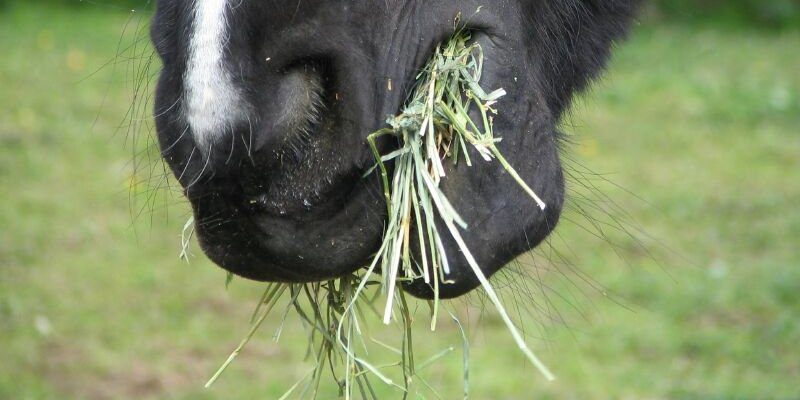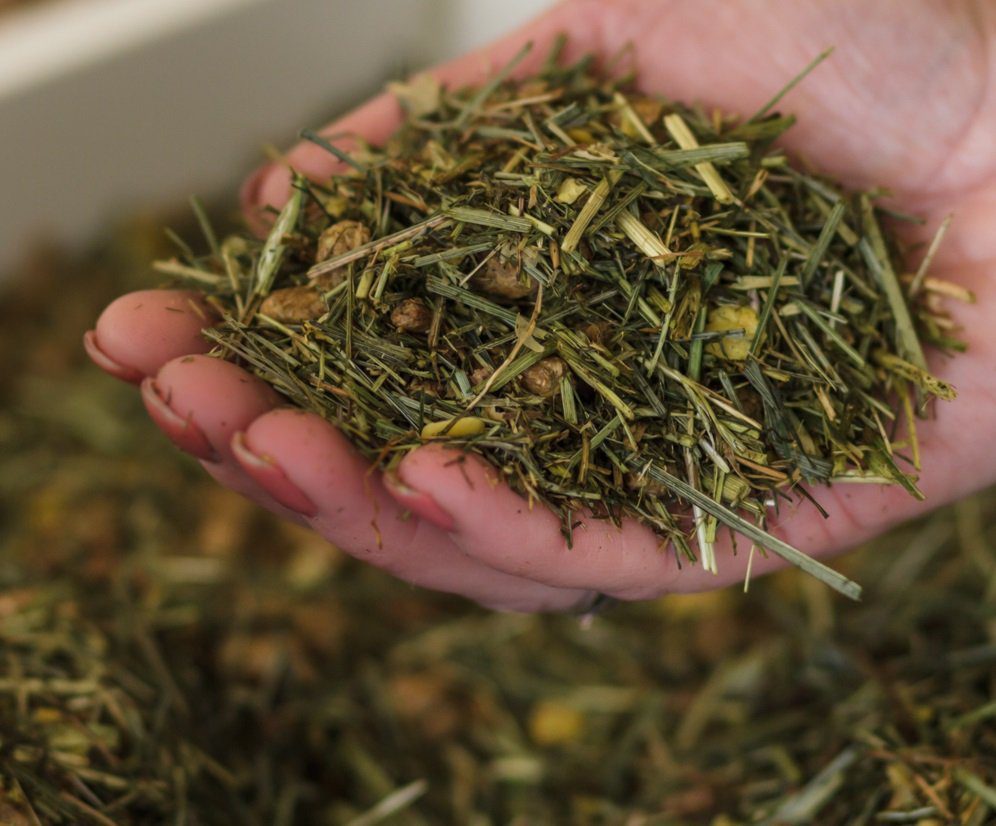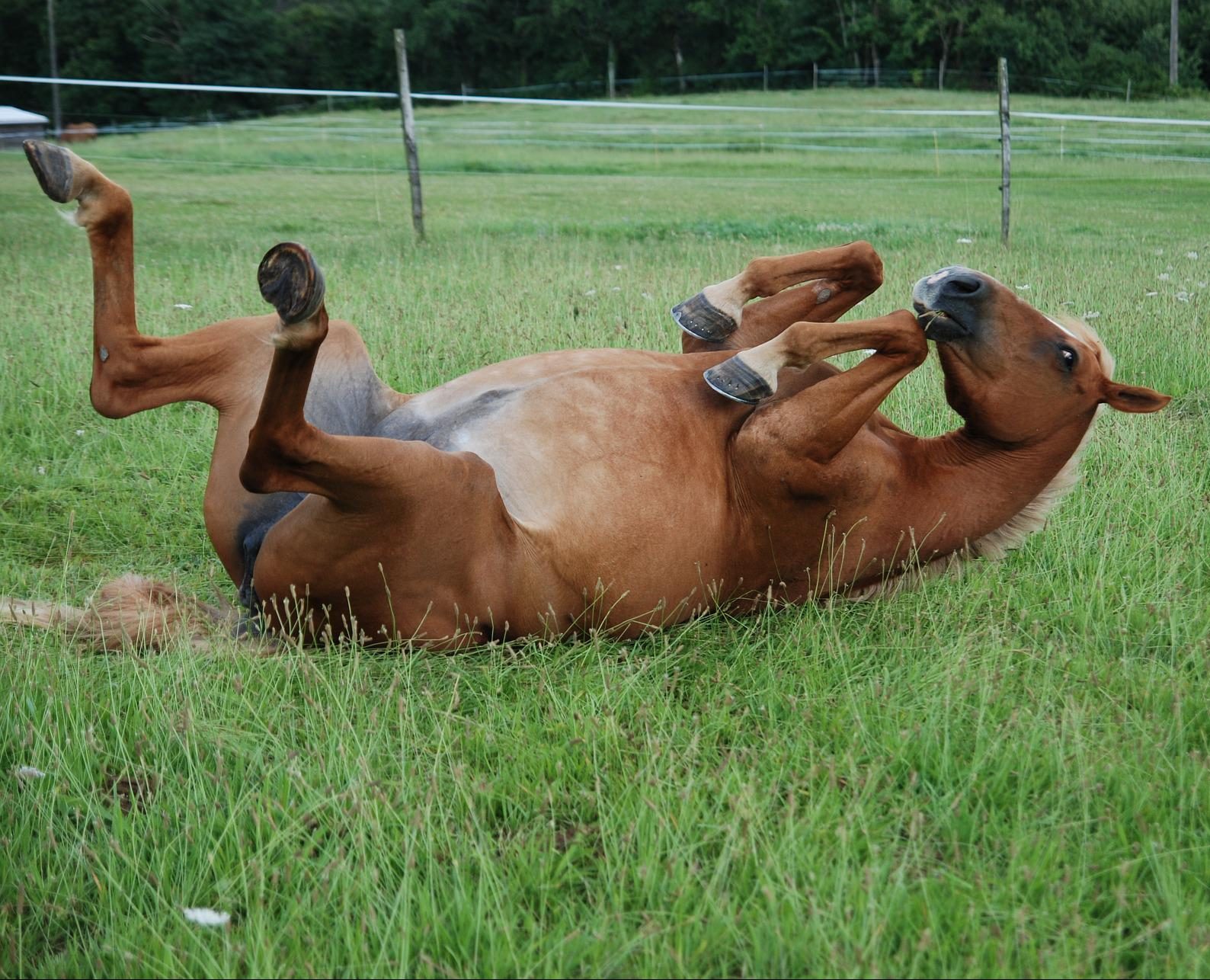Equine Gastric Ulcer Syndrome (EGUS) is now diagnosed as often as colic and arthritis. In fact 50-90% of adult horses have ulcers currently. However, the mechanism whereby ulcers occur is often misunderstood and prevention is tricky. In todays blog, we will be providing an overview of squamous ulcers, looking at common causes, the clinical signs for you to look out for, treatment options and prevention methods.
But first …
To understand what you vet means when they mention squamous ulcers, it helps if you know the general anatomy of your horse’s digestive tract!
Your horse’s stomach is split into two regions; the squamous region, which is the top of the stomach and the glandular region which is the acidic bottom of the stomach. These two areas are separated by the margo plicatus (a sharp ridge in the stomach).

Ulcers typically occur in the squamous region of the stomach. This is due to the cells in this being similar to the ones found in the oesophagus and there poorly protected from acid.
The horse’s stomach is relatively smaller compared to other species, this means they cannot handle large amounts of food at once. Horses are built to graze and eat frequently. Therefore a steady flow of stomach acid is produced to aid the digestion of the constant intake of forage.. This means a horse’s stomach produces acid 24hrs a day, producing up to 34litres of stomach acid per day, even when the horse is not eating.
Causes
Horses develop squamous ulcers primarily due to the unique nature of their digestive system. Equine stomachs produce gastric acid continuously, even when there is no food to digest. This constant acid production can erode the protective mucous lining of the stomach, leaving the sensitive squamous portion vulnerable to damage. In a natural, forage diet, the stomach acid is buffered by the both the forage and saliva in the stomach. When horses are fed a large breakfast and dinner, the stomach is left without feed for a prolonged period of time. This means there is little in the stomach to neutralise the acid. Furthermore, if these meals are high in sugar and starch, they can further increase the acidity of the stomach, as they produce volatile fatty acids when digested.
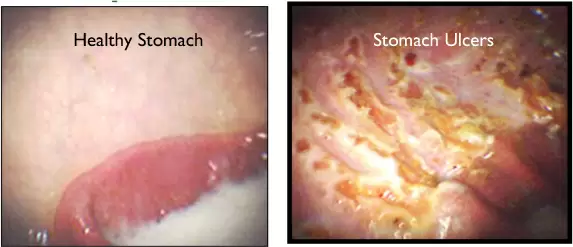
Physical and environmental stressors such as transport, competition and box rest are additional risk factors. Additionally the use of some nonsteroidal anti-inflammatory drugs (NSAIDs) such as phenylbutazone (bute) and flunixin meglumine (banamine) can decrease the integrity of the protective mucus layer of the stomach, making it more susceptible to ulcers. These stressors can disrupt the natural buffering mechanisms in the horse’s stomach, allowing acid to accumulate and harm the squamous lining, ultimately leading to the development of painful squamous ulcers.
Clinical Signs
Clinical signs of squamous ulcers in horses can often be subtle but are essential to recognise for timely diagnosis and effective treatment.

Clinical signs include:
- Change in behaviour
- Anorexia
- Girth reactivity
- Poor Performance
- Weight Loss
Diagnosis
The only way to confirm your horse has ulcers is booking in a gastroscope with your vet. The general procedure involves withholding all feed from your horse for about 12 hours prior to the scope. Your horse will then be sedated and the endoscope performed.
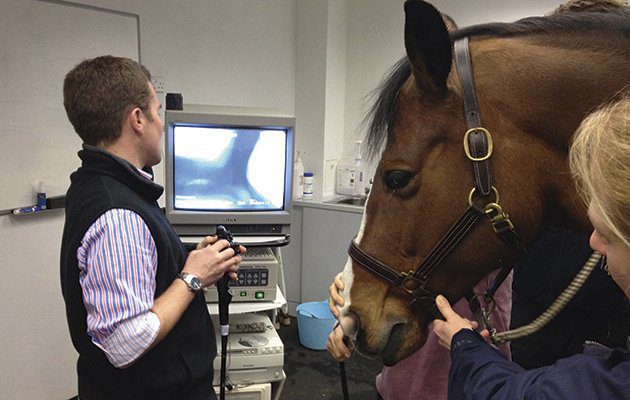
The gastroscope itself only takes about 20 minutes and is generally very well tolerated by horses.
Treatment
Most treatment plans for squamous ulcers involves primarily focusing on acid suppression to facilitate ulcer healing. For squamous ulcers, the most popular drug treatment is oral omeprazole once a day. Omeprazole works as a proton-pump inhibitor, meaning it effectively inhibits the acid-producing pumps in the stomach.
It is recommend that omeprazole is administered once a day approximately 30 minutes before a meal, ideally in the morning, once a horse has naturally fasted overnight. Research studies have demonstrated an impressive 70-80% success rate in healing squamous ulcers within a 28-day treatment period using omeprazole (Doucet et al., 2003; Murray et al., 1997).
Prevention
There are several management strategies you can implement that can help decrease the risk of reoccurrence:
Turn Out:
Research indicates that turning your horse out decreases the risk of ulcers developing. This is due to the horse having constant access to forage, ensuring the stomach has a buffer against stomach acid. However, this is an induvial recommendation; some horses dislike being out for large periods of time, and may disengage from eating. For these horses, it is better to bring them into the stable with a large net. Similarly, if the field has poor grazing, it is worth providing additional hay or haylage in the field.
Pre-Exercise Feeding:
Furthermore, consider feeding your horse a small meal of chaff 30 minutes before exercise. By having food in the stomach, you can prevent gastric juice, ‘splashing’ against the squamous part of the stomach, which, as previously mentioned, isn’t protected from acid. The feed forms a ball of soggy chaff within the stomach, therefore there is less gastric juice limiting acid splash.
Forage:
One of the most important prevention methods is your horse’s access to forage. Although one of the easiest ways to prevent ulcers is adlib forage, this is not always possible. Management strategies such as trickle nets, 24hr turnout and providing soaked hay, all allow forage to be provided in greater quantities. It is also recommended that horses are provided more forage during the day than at night, as horses starved during the day are more likely to develop ulcers than horses starved at night.
High Starch Diets
When horses eat starch, it is broken down in the stomach into compounds known as volatile fatty acids. The more starch your horse is fed, the more acid that is produced in the stomach. Therefore it is better to opt for oil as an energy source over starch. Ideally, any feed for a horse who is prone to ulcers should be 10% or under in starch and sugar content. If your horse requires more energy, the oil content you should be looking for is 10% and above.
Some other points to consider include :
- Ensure your horse has access to water at all times. Lack of water has been linked to increased risk of EGUS. When travelling horses, frequent breaks should be taken to offer water.
- Consider using fat coated electrolytes (such as Pure Electrolytes) as these are less irritable on the stomach lining and are absorbed better by the gut.
- Consider using supplements aimed at supporting horses with ulcer issues. Supplements such as Pure Feed’s Gastro Support contain antioxidants to combat oxidative stress in the stomach, buffers/antacids to lower stomach acidity, and ingredients to stimulate mucus production.
If you have any more questions about Pure Feed or feeding your horse, our friendly team of nutritionists are here to help. Email the team at nutrition@purefeed.com or call us on 01458 333 333, Monday to Friday 9 am to 5 pm.


